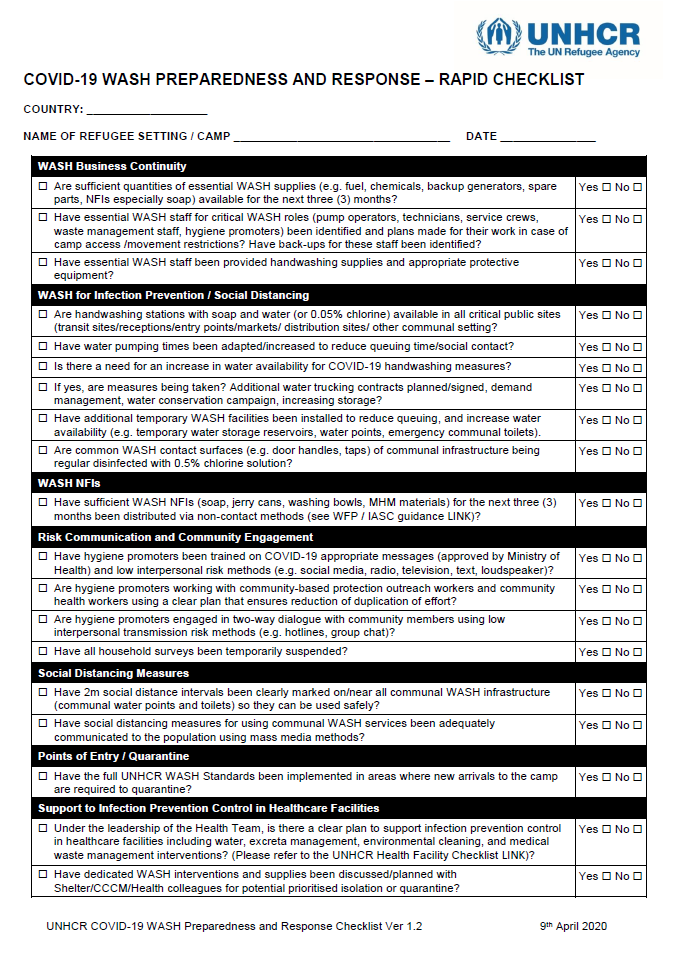
In response to a call for sanitation solutions for difficult ground conditions in refugee settings, Sanivation introduced an innovative market-based solution with a waste-to-value component to Kakuma Refugee Camp in Kenya. This report examines the business model and financial model that Sanivation developed during the project and illustrates some of the real world challenges and opportunities for waste-to-value sanitation. It is hoped that the insights from this research will provide a useful reference for potential investors and entrepreneurs, as well as humanitarian practitioners looking to design self-sustaining waste-to-value sanitation services in refugee and low-resource settings in the future.

This condensed briefing note describes the components of the UNHCR WASH Monitoring System in particular why monitor, when to monitor, and what to monitor.

This condensed guidance note has been written to summarize the various low and intermediate strength disinfectants, their uses, advantages and disadvantages, and how to formulate them using various chlorine compounds.

This simple poster describes how to make a simple strong chlorine solution of 0.5% using bleach for disinfection in healthcare facilities and public latrines.

This simple poster describes how to make a simple strong chlorine solution of 0.5% using chlorine powder for disinfection in healthcare facilities and public latrines.

This handbook has been written with the specific objective of providing practical guidance and an overview of vector control in emergency situations for relief workers and local personnel. It will enable them to develop the skills required to plan and implement a vector control project in an emergency situation, where there is a vector-borne disease epidemic, or where the risk of an epidemic is high.

The following document describes a complete description of common disease vectors along their control methods with a focus on low costs settings.

The following is a rapid checklist of key WASH preparedness and response activities for COVID-19 to support regional and country operations in planning and resource mobilization. These are based on WHO technical guidelines and UNHCR guidance for operations and where relevant operation or site level outbreak preparedness and response plans.
Languages: French and Spanish.

This simple poster describes how to make a simple mild chlorine solution of 0.05% for handwashing in healthcare facilities and public locations.

This second webinar for UNHCR Global WASH staff and partners summarizes UNHCR operational messages on WASH preparedness and response to COVID-19.
Tags: Coronavirus, Coronavirus, Coronavirus, Coronavirus, Coronavirus, Coronavirus, COVID-19, COVID-19, COVID-19, COVID-19, COVID-19, Handwashing with Soap, Handwashing with Soap, Public Health, Public Health, Public Health, Public Health, Public Health, and Public Health. Organisations: UNHCR, UNHCR, UNHCR, UNHCR, and UNHCR. Categories: WASH Reference Documents, WASH Reference Documents, WASH Reference Documents, WASH Reference Documents, WASH Reference Documents, WASH Reference Documents, WASH Reference Documents, WASH Reference Documents, and WASH Reference Documents.










